We all have heard about omnivores, herbivore or carnivores. But what are frugivores? Oddly, most people have never heard the term that describes the dietary pattern of our closest living relatives, the apes, and, highly likely, our own natural diet: Frugivores are animals specialized in foraging fruits and with a strong preference for fruit. They are fruit-eaters and lovers!
This overview finally explains why we are born with such a strong sweet tooth: as frugivores, we crave sweet sugar from fruits instinctively as our primary source of energy, as all apes do.
What is a frugivore?
Frugivores are animals whose preferred food is fruits and thus have adaptations for foraging fruits. Highly frugivorous animals eat mainly fruits, but most frugivores also eat other types of foods. Frugivores can be a sub-class of omnivores or herbivores.

Frugivores are mainly found in tropical areas, where wild fruits are bigger and more nutritious than those that the temperate flora can produce. In the tropics, fruits are available throughout the entire year and can sustain frugivorous animals.
Frugivores are often the seed-disperser of the fruit-bearing plant. One plant can have more than one fruit-disperser, but generally, fruits and their frugivore evolve together. This is also called the “dispersal syndrome,” where fruit traits are shaped by the frugivores’ preferences (read more here).
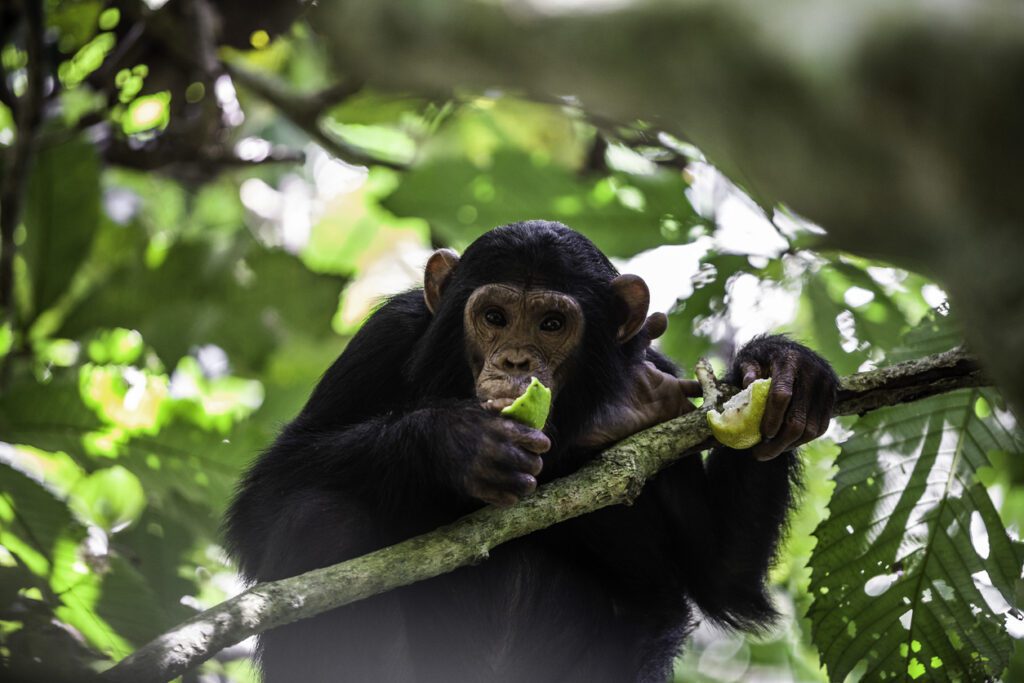
Depending on the animal type (birds, mammals, insects, etc., see below), the frugivores’ adaptations to fruit foraging and fruit preference are very different! This is also the reason why some types of fruits can be toxic to one frugivorous species but not to another species – depending if they have co-evolved or not.
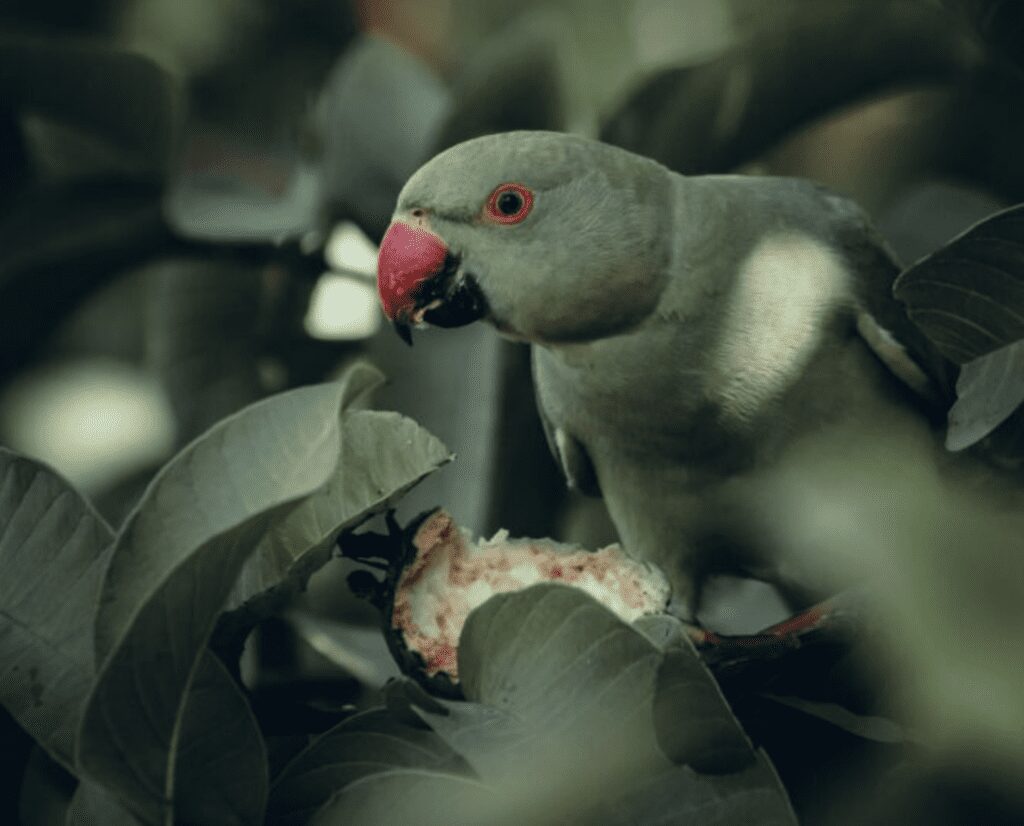
Types of frugivores
There are frugivorous animals among many animal classes, like mammals (including primates), birds, reptiles, and insects. Weirdly, frugivore research has long mainly focused on birds – not on our closest relatives, the primates. Research on frugivory in primates includes humans and should therefore be of major interest to understanding our natural diet.
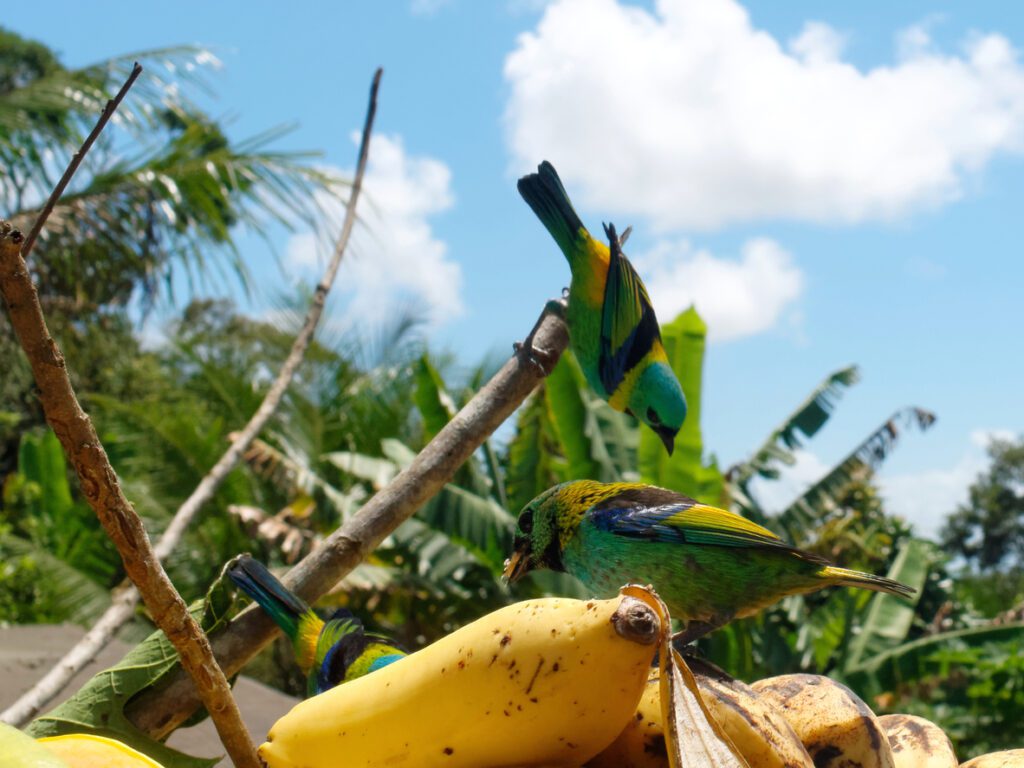
Examples of different types of frugivores are orangutans, toucans, grey parrots, maned wolves, iguanas, fruit bats (flying fox), some turtles and lizards, and fruit flies. All of the larger frugivores are tropical species.
Are humans frugivores?
Humans are taxonomically placed within the family of great apes, of which all are highly frugivorous (including gorillas). Humans are not only genetically closely related to other apes; just like them, we are highly attracted to fruits in nature, and our biology is typical for a tropical frugivorous (primate) species. When looking at human dietary anatomy and physiology, it is hard to deny the frugivorous traits of humans! So much so that – once we have the eyes to see it – we must ask ourselves why this topic is never even discussed in science or the public. However, a classification of humans as frugivorous omnivores, like our closest relatives, the chimpanzees, would make much sense: A frugivorous omnivore is able to eat a broad range of foods, but their preferred foods – and optimal staple foods – are fruits in the wild.

We, humans, do not live in our original natural habitat like chimpanzees do. We have learned to cook and eat “non-foods,” which are not really our natural foods from an evolutionary perspective. We are cultural omnivores, but biologically, we are still frugivores! This is why we are so confused about our diet today.
Are humans adapted to a diet high in fruits?
Humans share most diet-related biological characteristics with frugivorous primates: Digestive tract, microbiome, and color-vision are just a few examples. One interesting trait is that we have lost the internal production of vitamin C (genetic mutation). This means we need to obtain a large amount of vitamin C from our diet, while most mammals produce vitamin C themselves! Many frugivore species have lost vitamin C production independently, like frugivorous bats, guinea pigs, and all primates (read more here).
Many more features are perfectly shaped for fruit-eating, which equips humans and chimpanzees as specialized frugivores in nature! Learn more:
Aren’t chimpanzees omnivores?
Chimpanzees are classified as omnivores. In scientific literature, however, they are referred to as frugivores. Both terms are correct because chimpanzees are frugivorous omnivores. The apes are able to digest both, meat and plant matter which makes them omnivores. However, their preferred food in tropical forests is fruits. Thus, the sub-classification is clearly frugivore. This is reflected in scientific literature, which refers to chimpanzees as frugivores or highly frugivorous primates.
What does such a diet look like in nature? In the wild, chimpanzees (Pan troglodytes) eat mainly fruits, but also other plant foods and also some animal foods. Bonobos (Pan paniscus) – the chimpanzee species that is closest related to humans – are classified as omnivorous frugivores. This is because they eat even less animal foods than Pan troglodytes.
According to the Jane Goodall Institute, Chimpanzees eat fruits (preferred), figs, nuts, and seeds. Flowers, barks, and leaves are second choice foods when fruits are scarce. Insects make up to 4% of the diet. Animal products (which include eggs, insects, and meat) can make up to 6% of the diet. Read our in-depth article on the chimpanzee diet here:
What is a frugivorous diet?
A frugivorous diet describes the foods foraged by frugivorous animals in nature, which consists mainly of fruits. For frugivorous primates, this means ripe tropical fruits, greens, nuts, and tubers, but also eggs, insects, and sometimes meat. Frugivorous primates can only exist in the tropics, where fruits are larger, more nutritious, and abundant throughout the year.
Diets of frugivorous animals vary among species and even populations or within populations depending on food availability. For example, the generally frugivorous primates – macaques, chimpanzees, and capuchins – in Thailand are known to eat shellfish. They use tools, a specialized behavior, in which the capuchin monkey seems to apply their shell-cracking skills on shellfish, which they already know from the handling of their favorite hard-husked palm-tree fruit called Cumare. Frugivorous chimpanzees even hunt smaller monkeys. However, there are strong indications that hunting is not a dietary or nutritional “thing” but rather a socially motivated behavior among males.
To know more about the human version of a frugivorous diet, visit this article:
A frugivorous diet is not to be confused with a fruitarian diet. Fruitarian is understood as a fruit-only diet. In its optimal form, a fruitarian diet relies on tropical fruits and stands on the observation that humans are frugivores. However, a fruitarian diet bears a very high risk of nutritional deficits. Further, being a fruitarian is a choice – like being vegan. On the contrary, being frugivorous is not a choice – it is the dietary ecology of an animal naturally given by its biological features.
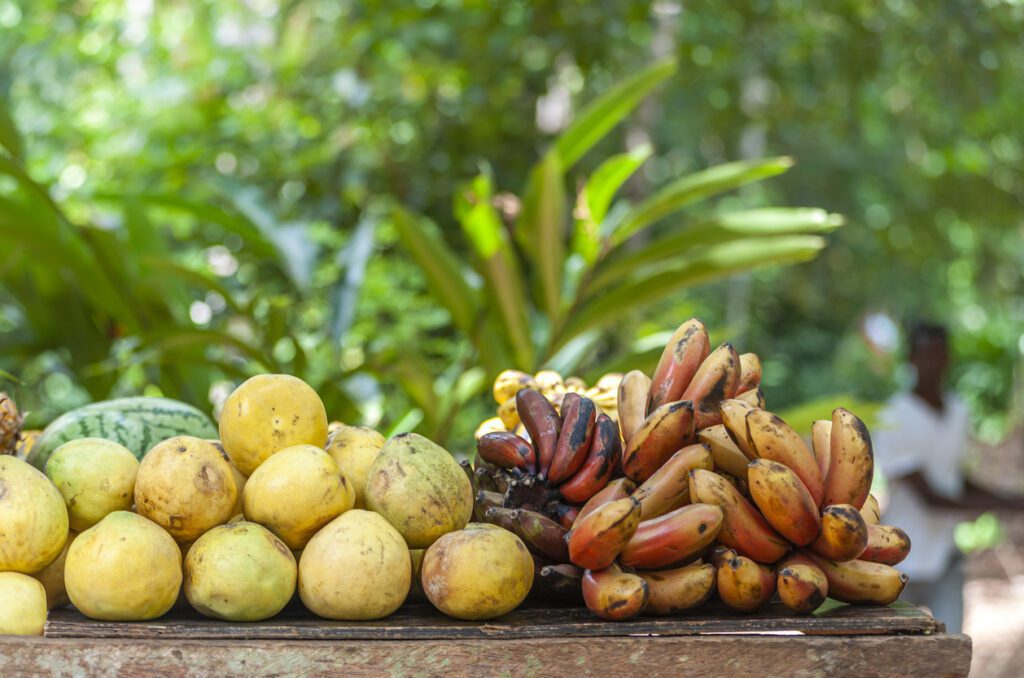
Learn more about fruit-based diets here:
What about hunter-gatherers?
Before agriculture, humans were hunter-gatherers with locally varying diets, including meat, plant foods, and cooking. However, humans originated in tropical forests, where they likely had a fruit-heavy diet, which is still reflected in our genetics, as we are perfectly adapted to fruit-eating. Humans were able to migrate out of the tropics mainly through cultural adaptations, not biological adaptations. Thus, our hunter-gatherer past does not exclude nor defy our frugivorous nature. Rather, cooking and animal-based diets are culturally developed survival strategies rather than a reflection of our biological make-up. We are also not hooked on cooked diets, nor do we have adaptations as meat-eaters.
Read more about this here:
Have humans co-evolved with fruits?
Primates are seed dispersers and have coevolved with their fruits. This is also called the “dispersal syndrome.” Because primates are tropical animals, we have evolved with tropical fruits, while most ancient temperate fruits were dispersed by birds. Because of the symbiotic relationship between fruits and frugivores, both species are shaped by each other: the fruits evolve according to the frugivores’ preferential taste, color, etc., while the frugivores’ dietary traits specialize in foraging and digesting their foods.
Humans come from a tropical frugivorous ancestry, which means our ancestors have coevolved with fruits. This is reflected in our high affinity to tropical fruits and the fact that many wild tropical fruits are edible for humans (unlike most temperate fruits, which were not palatable before selective breeding).
References
- Ventura, A.K. and Mennella, J.A. (2011) ‘Innate and learned preferences for sweet taste during childhood’, Current Opinion in Clinical Nutrition and Metabolic Care, 14(4), pp. 379–384. doi:10.1097/mco.0b013e328346df65.
- Frugivore (2022) Wikipedia. Wikimedia Foundation. Available at: https://en.wikipedia.org/wiki/Frugivore#Frugivore_adaptations_for_fruit_consumption (Accessed: April 3, 2023).
- K. Valenta, O. Nevo, The dispersal syndrome hypothesis: How animals shaped fruit traits, and how they did not. Functional Ecology. 34, 1158–1169 (2020), doi:10.1111/1365-2435.13564.
- Dani Sarusi, 10 things chimpanzees eat. Jane Goodall (2022) (available at https://janegoodall.ca/our-stories/10-things-chimpanzees-eat/).
- Woodward, A. (2017) Tool-wielding monkeys push local shellfish to the edge of extinction, New Scientist. New Scientist. Available at: https://www.newscientist.com/article/mg23531441-900-toolwielding-monkeys-push-local-shellfish-to-edge-of-extinction/ (Accessed: April 3, 2023).
- Izawa, K. (1979) “Foods and feeding behavior of wild black-capped capuchin (Cebus apella),” Primates, 20(1), pp. 57–76. Available at: https://doi.org/10.1007/bf02373828.
Last updated on:


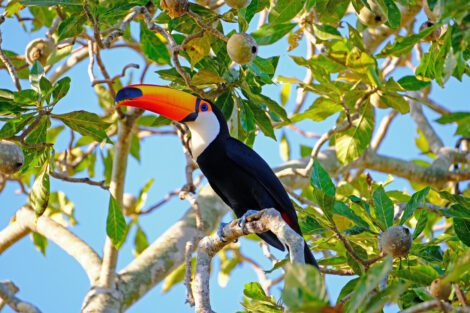
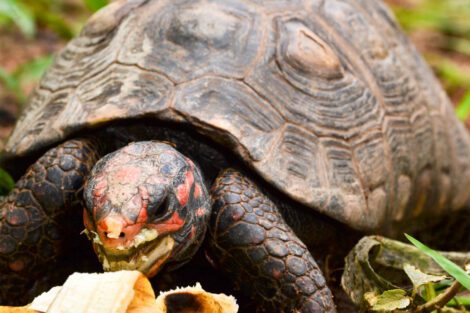
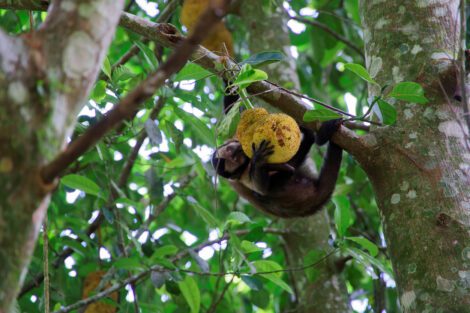
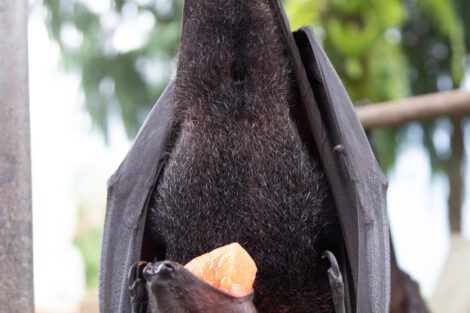

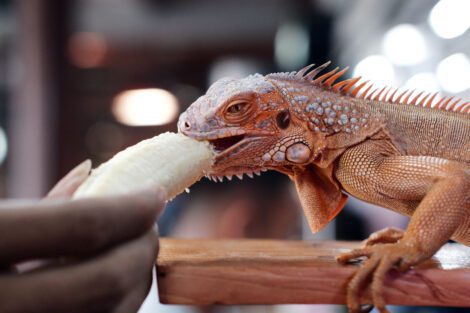
Add Comment